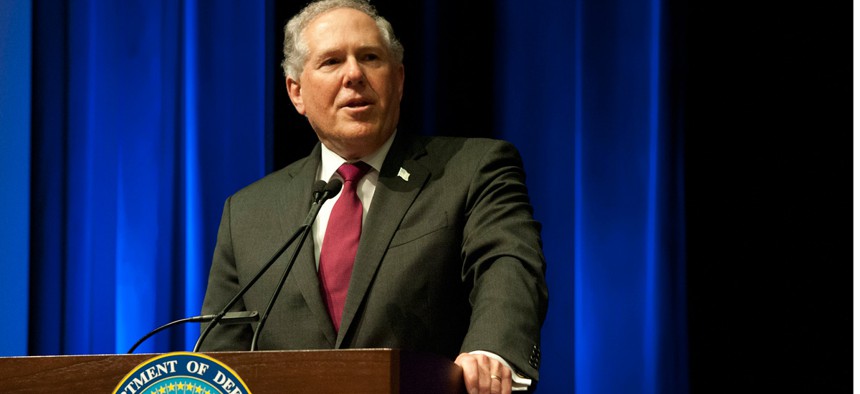Pentagon Debunks DOD-VA Interoperability Myth

Frank Kendall, DOD undersecretary for acquisition, technology and logistics. Defense Department
“There is not a big interoperability problem with the VA and DOD today,” according to Frank Kendall, DOD undersecretary for acquisition, technology and logistics.
For years, the Pentagon and the Department of Veterans Affairs struggled to integrate their electronic health records systems, spending upward of a billion dollars on an effort that was ultimately scrapped, raising red flags in Congress and among government watchdogs.
At one point in 2014, VA attempted to convince the Pentagon to use its proprietary VistA records system as a replacement for DOD's aging legacy system, but that effort fizzled.
Instead, the Pentagon bid out and awarded a massive contract valued at up to $9 billion to Leidos to upgrade its health records system. Much of the build-up during the bid time frame centered on the Pentagon’s wish for interoperability between health systems.
Yet, Pentagon officials, briefing reporters July 30 before the Leidos award, contended that interoperability between VA and the Defense Department was actually far less of an issue than it was made out to be.
“There is not a big interoperability problem with the VA and DOD today,” Frank Kendall, DOD undersecretary for acquisition, technology and logistics, told reporters.
Kendall said it was a “misconception” DOD was buying commercial electronic health records software to solve interoperability.
Chris Miller, program executive officer for DOD’s healthcare management systems modernization, was even more adamant about the two departments' capability to share.
DOD has continued its work on interoperability and standards with VA and the Office of the National Coordinator for Health IT, he said. Miller added that interoperability was an important requirement in the Defense Healthcare Management System Modernization award given how often DOD shares health records with VA and private providers. DOD and VA each have close to 10 million beneficiaries, on par with the largest private sector providers.
“I offer this to anybody,” Miller said. “We share more information between DOD and VA than any two large health systems in the world. I can take any provider today, put them in front of a computer anywhere and I can pull up the entire longitudinal health record between [a DOD beneficiary] and a veteran. I’ve done this on the Hill, I’ve done this with a number of senior people in government because they don’t believe me.”
The myth that VA and DOD don’t share information or is somehow impossible, he said, isn’t true. “It is possible and we do this every day,” Miller said. “The DOD and VA do more today in data sharing over a longitudinal way than any two health systems in the world.”
In fact, DOD and VA share over 1 million pieces of health IT-related information every day, Kendall said.
In June, VA officials echoed similar statements publicly while promoting a new health management platform, with one official claiming DOD and VA had shared data “for a long time.”
NEXT STORY: Supper Club on Mars



